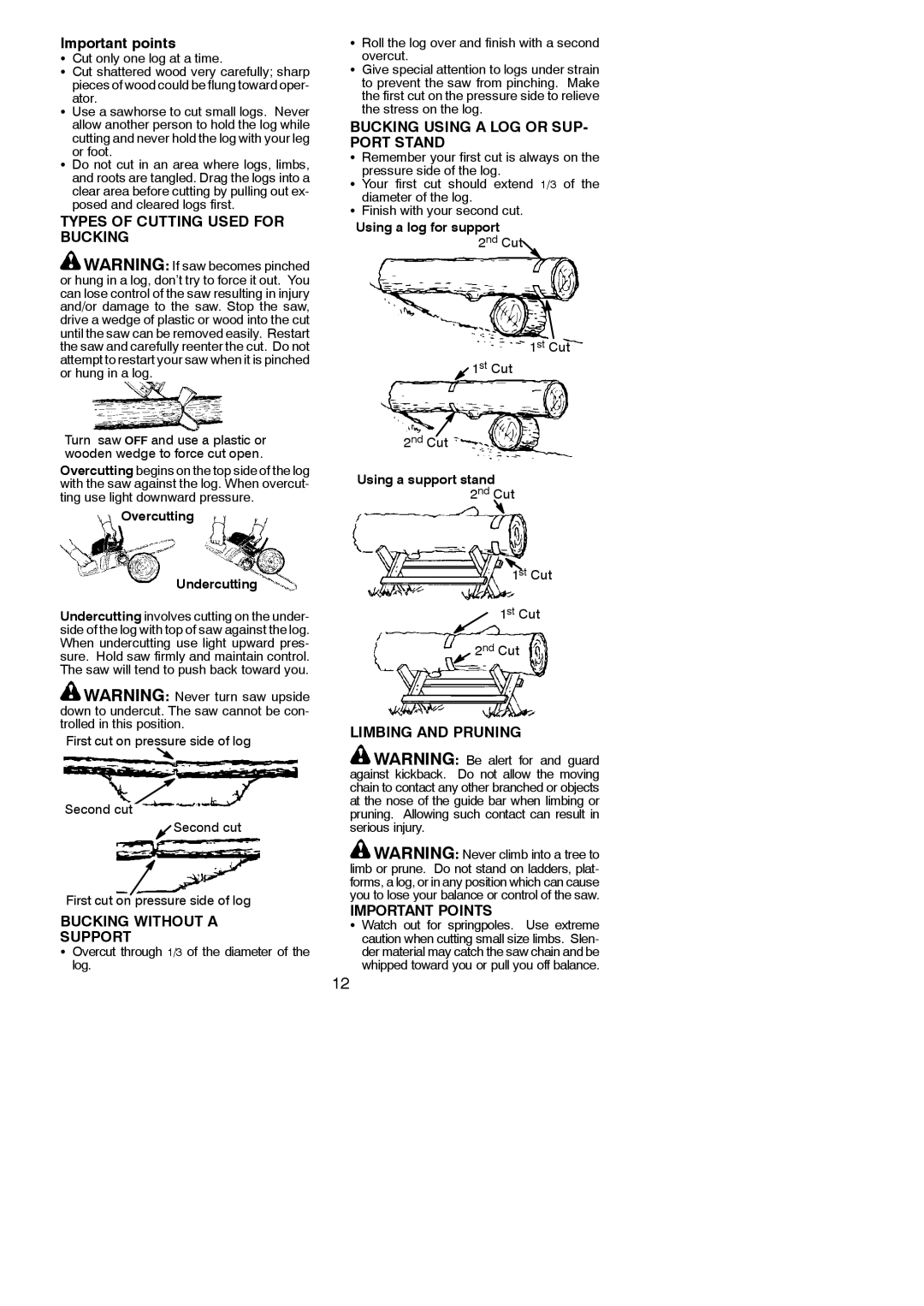Aug-42 specifications
The McCulloch Aug-42 is a remarkable piece of engineering that showcases innovation in the small engine and handheld power tool industry. This chainsaw, introduced by McCulloch, has made its mark for its reliability, efficiency, and ease of use, making it an excellent choice for both professional and amateur users.At the heart of the Aug-42 is a powerful 42cc engine that provides optimal performance for cutting tasks. The engine's design emphasizes lightweight construction while maintaining durability, allowing for ease of maneuverability. This is especially beneficial for users who may be involved in lengthy cutting or trimming tasks, as the lightweight build reduces fatigue.
One of the standout features of the Aug-42 is its anti-vibration technology. This innovation significantly minimizes the vibrations felt by the user during operation, enhancing comfort and control. As a result, operators can work for extended periods without the discomfort typically associated with prolonged chainsaw use.
The Aug-42 also incorporates a strategized fuel delivery system that maximizes power while ensuring fuel efficiency. It features a catalytic muffler that not only reduces noise during operation but also lowers the emissions produced, making it a more environmentally responsible choice. This combination of power and eco-friendliness caters to today’s environmentally conscious consumers.
The chainsaw comes equipped with a side-access chain tensioning system. This allows users to adjust the chain tension without needing to remove the guide bar, resulting in quick and hassle-free adjustments in the field. This essential feature minimizes downtime and keeps the user focused on their task.
Safety is another priority in the design of the McCulloch Aug-42. It includes an automatic chain brake that halts the chain’s motion when unexpected movements occur, protecting the user from possible accidents. Additionally, the chainsaw has a comfortable grip handle designed to provide optimum control, even in wet conditions.
In summary, the McCulloch Aug-42 fuses power, efficiency, and safety into a robust, user-friendly package. Its advanced technologies, including anti-vibration systems, fuel efficiency features, and safety mechanisms, position it as a preferred choice for those needing a dependable chainsaw. Whether used for general yard work, tree trimming, or more significant outdoor projects, the Aug-42 stands as a testament to McCulloch’s commitment to quality and innovation in outdoor power equipment.

